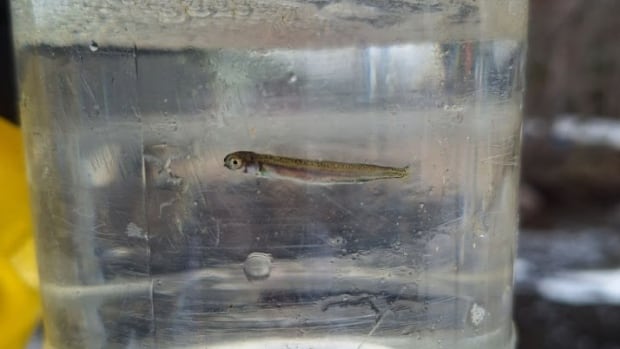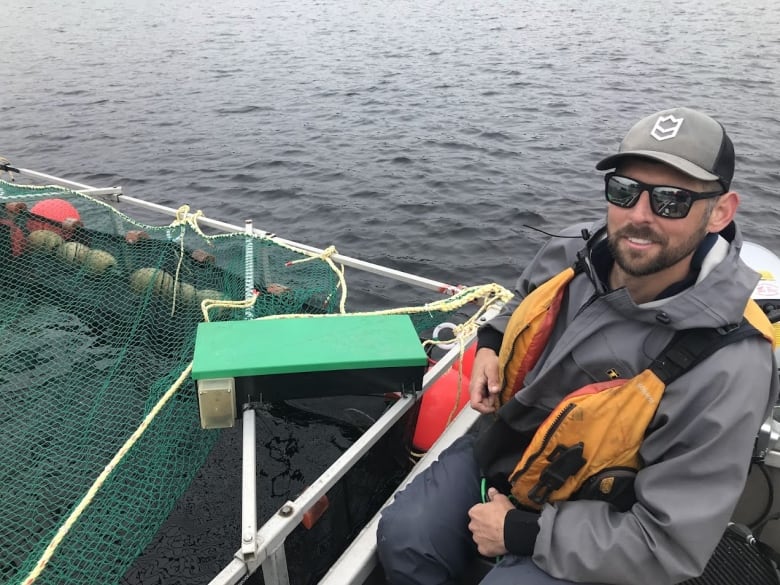
Scientists will implant tiny tracking tags in up to 200 captive-raised Atlantic whitefish this year as part of the effort to stave off extinction of one of Canada’s most critically endangered species.
Three interconnected lakes behind the town of Bridgewater, N.S., are the only place on earth where this ancient relative of Atlantic salmon still survives in the wild.
The tagged fish will be released into the Petite Rivière watershed to locate spawning areas and to see if the fish have retained their natural instinct to go to the ocean.
“Well, we’re not extinct yet. That’s the positive news,” said Jeremy Broome, a Fisheries and Oceans biologist on the recovery team.
Down to 13 breeding females
A 2019 genetic analysis estimated there were 13 breeding females in the wild.
There may be fewer today.
This spring, just six newly hatched Atlantic whitefish were collected at locations inside the watershed.
“That indicates to me that we have spawning happening. At least two different spawning pockets or potentially with multiple females,” he said.
“If we can take an encouraging sign from it, that’s an encouraging sign.”
Two of the three lakes have been overrun with invasive predators: chain pickerel and smallmouth bass.
No juveniles were recovered last year.
They are now so rare that young are whisked to a streamside rearing facility at the Hebb Lake dam.
Captive-bred fish big enough to tag
A dam at this site blocked the species’ access to the Atlantic Ocean for over a century. A fish ladder was built at the site in 2012, but none have been seen in the ladder in a decade.
The portable trailer contains pumps and tanks where the fish are reconditioned and then sent to Dalhousie University in Halifax where a captive breeding program has been restarted.
The first one was closed down in 2013 by DFO under the Harper government.

The captive breeding program has now produced fish large enough to be implanted with battery-powered tags that emit signals. The fish will be released into the watershed where 50 acoustic sensors are being installed in the lakes and in the estuary below the dam on the way out to sea.
“Each receiver will tell us which whitefish has been detected at each of those stations,” said biologist Robert Lennox of the Ocean Tracking Network.
“And we can reconstruct the movement paths during the fall and through the winter to actually identify how they’ve moved within the system and whether or not they’ve moved between lake and river or ocean and river.”
Critical habit
One of the goals of the tagging is to find where whitefish spawn in the 16-square-kilometre watershed.
“You think about extinction risk as being something that is far away and happening out of sight, but to have a species like this right here in Nova Scotia that is potentially on the brink of extinction, about which very little is known, is pretty incredible,” Lennox said in an interview.
Dozens of other whitefish will carry Passive Integrated Transponders as part of a DFO program. Each PIT tag has an internal microchip that is activated when it passes close to a special antenna. The antenna is connected to a computer that records the identity of the tag and the time that it passed by the antenna. Antennae have been placed near the fish ladder at the Hebb dam.
The tagging program is one of two whitefish recovery projects funded by the Canada Nature Fund for Aquatic Species at Risk. It is sharing $840,000 over three years with a project to preserve Atlantic salmon in the inner Bay of Fundy.
Plan B
The other is for environmental DNA, or eDNA, sampling led by geneticist Paul Bentzen at Dalhousie. It detects the presence of species from the tiny amounts of genetic material they leave behind in the water. In this case, looking for the presence of invasive predators and whitefish at Bridgewater, and the absence of predators elsewhere in the province.
This project was given $813,000 over three years.
The search for a suitable site for relocation has been underway for years, given that the Bridgewater lakes may become untenable.
“We continue to investigate range expansion. We have a number of sites that have been shortlisted and we continue to investigate those,” said Broome.
“We are following up with additional water quality surveys…. We are trying to look at similarities between the system here and the Petite [Rivière] and those lakes.”
A specific lake has not been selected.
“This is a very dire situation for this species,” said Lennox.





